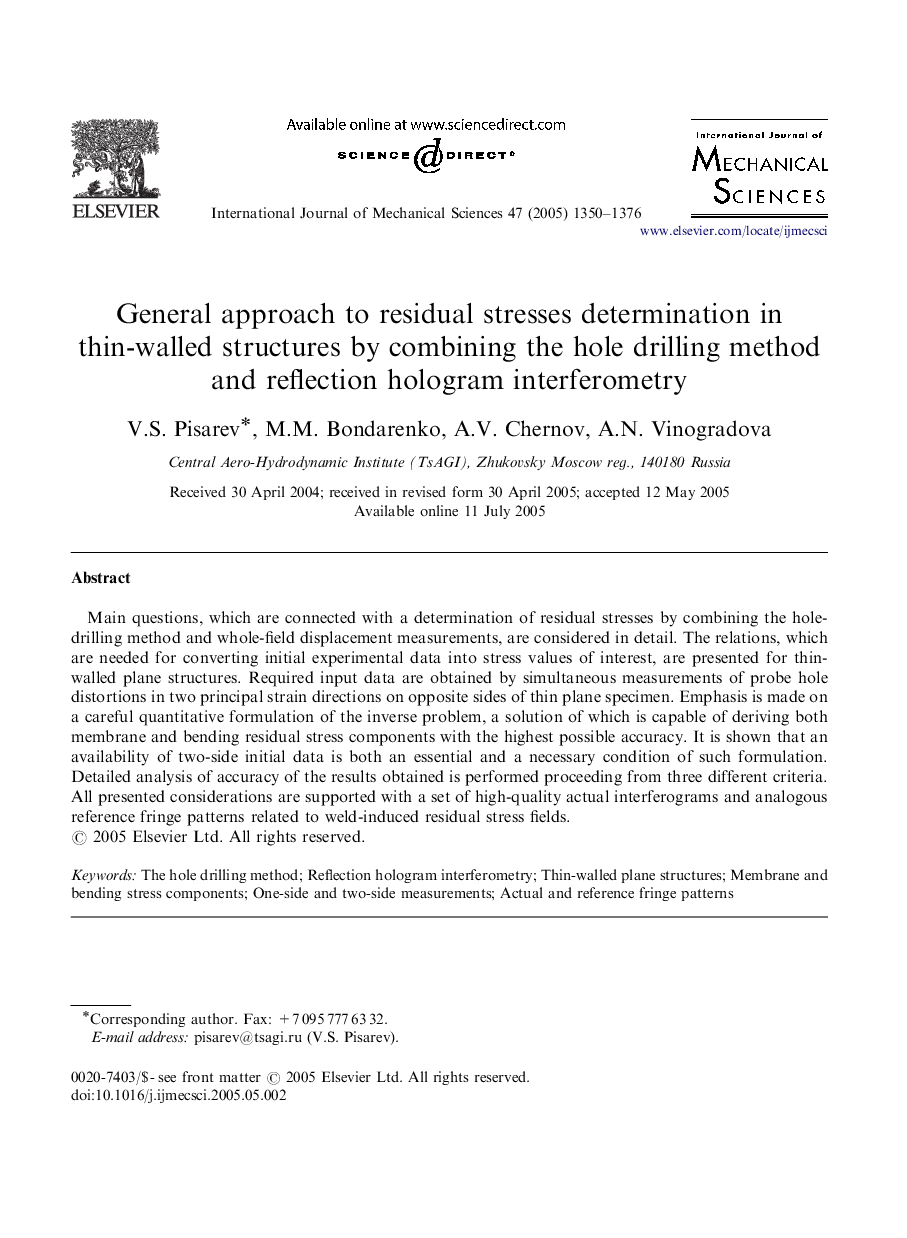| Article ID | Journal | Published Year | Pages | File Type |
|---|---|---|---|---|
| 9706065 | International Journal of Mechanical Sciences | 2005 | 27 Pages |
Abstract
Main questions, which are connected with a determination of residual stresses by combining the hole-drilling method and whole-field displacement measurements, are considered in detail. The relations, which are needed for converting initial experimental data into stress values of interest, are presented for thin-walled plane structures. Required input data are obtained by simultaneous measurements of probe hole distortions in two principal strain directions on opposite sides of thin plane specimen. Emphasis is made on a careful quantitative formulation of the inverse problem, a solution of which is capable of deriving both membrane and bending residual stress components with the highest possible accuracy. It is shown that an availability of two-side initial data is both an essential and a necessary condition of such formulation. Detailed analysis of accuracy of the results obtained is performed proceeding from three different criteria. All presented considerations are supported with a set of high-quality actual interferograms and analogous reference fringe patterns related to weld-induced residual stress fields.
Related Topics
Physical Sciences and Engineering
Engineering
Mechanical Engineering
Authors
V.S. Pisarev, M.M. Bondarenko, A.V. Chernov, A.N. Vinogradova,
